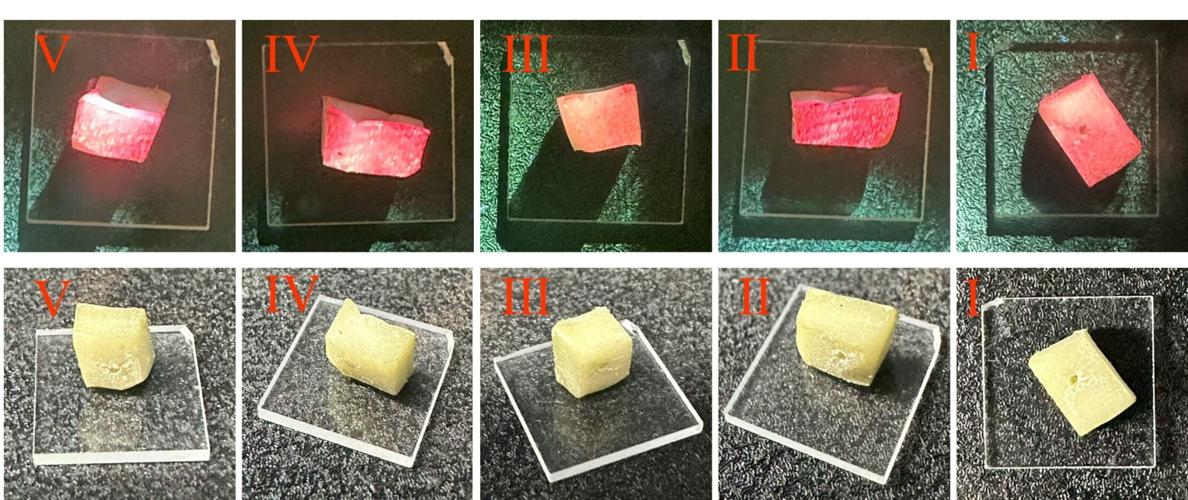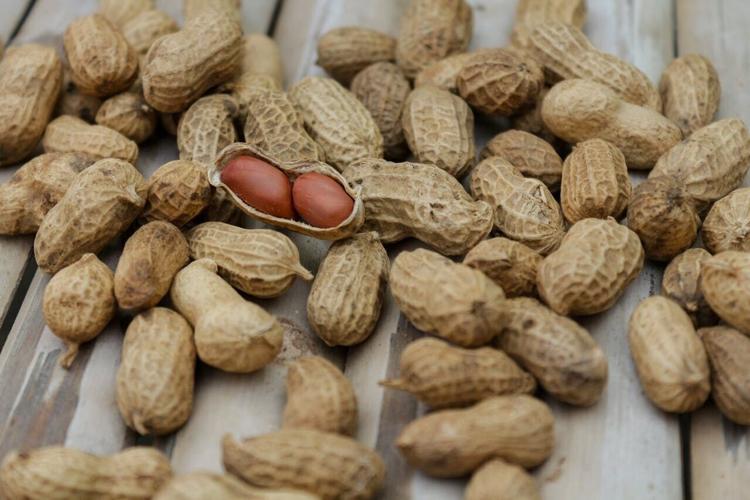
Upper: The biomaterial-based random laser under laser excitation. Lower: The biomaterial-based random laser under daylight illumination. (Zhihao Huang via SWNS)
By Stephen Beech
An advanced laser has been created using just leaves and peanuts.
Scientists made the state-of-the-art technology entirely from biomaterials – birch leaves and peanut kernels.
They say the environmentally friendly laser could become a cheap and accessible tool for medical diagnostics and imaging.
Physicists at Umeå University in Sweden, working with researchers in China, showed how a so-called "random laser" can be made entirely from biological materials.
Research co-author Professor Jia Wang, of Umeå University, said: “Our study shows that it is possible to create advanced optical technology in a simple way using only local, renewable materials."
She explained that a random laser is a type of laser in which light scatters many times inside a disordered material before emerging as a focused beam.
Unlike conventional lasers, which emit light in a narrow, directed beam, a random laser scatters light in many directions.
That allows it to illuminate biological samples more evenly and provide detailed information about structures within the tissue.
The technology shows promise for applications including medical imaging and early disease detection, and has attracted significant research attention.
But conventional random laser materials are often toxic, or expensive and complex to produce.

Jia Wang, Associate Professor at the Department of Physics, Umeå University. (Hans Karlsson via SWNS)
Wang and her colleagues created their laser using two common natural materials: birch leaves and peanut kernels.
They made nanometre-scale carbon dots from the birch leaves to serve as the gain medium and cut peanut kernels into small cubes whose rough and irregular surfaces help trap and scatter light.
The laser itself is still powered by an external light source, but the functional parts that scatter and amplify the light are made entirely from biomaterials.
Wang said: “The synthesis of the carbon dots is simple and straightforward, essentially a one-step pressure-cooking process.
“Instead of relying on complex technology, the natural microstructure of the peanut kernel does the job on its own."
The researchers tested how much energy was required to make the laser emit light.

(Photo by shattha pilabut via Pexels)
The results, published in the journal Nanophotonics, showed that it performs just as well as artificially engineered lasers.
Wang said: “The potential of this biomaterial-based random laser extends beyond bioimaging and diagnostics."
She added: "Given its low cost, renewability, and safety, it could also be developed into an optical tag for authenticating high-value documents, luxury goods, and electronic devices."
The breakthrough is the latest in Wang’s research group's long-term work on harnessing local, renewable resources for new technologies.
Two years ago, the team published a study showing how birch leaves collected on Umeå University’s campus can be used to produce organic semiconductors - materials found in thin TV and mobile phone displays.



















(0) comments
Welcome to the discussion.
Log In
Keep it Clean. Please avoid obscene, vulgar, lewd, racist or sexually-oriented language.
PLEASE TURN OFF YOUR CAPS LOCK.
Don't Threaten. Threats of harming another person will not be tolerated.
Be Truthful. Don't knowingly lie about anyone or anything.
Be Nice. No racism, sexism or any sort of -ism that is degrading to another person.
Be Proactive. Use the 'Report' link on each comment to let us know of abusive posts.
Share with Us. We'd love to hear eyewitness accounts, the history behind an article.